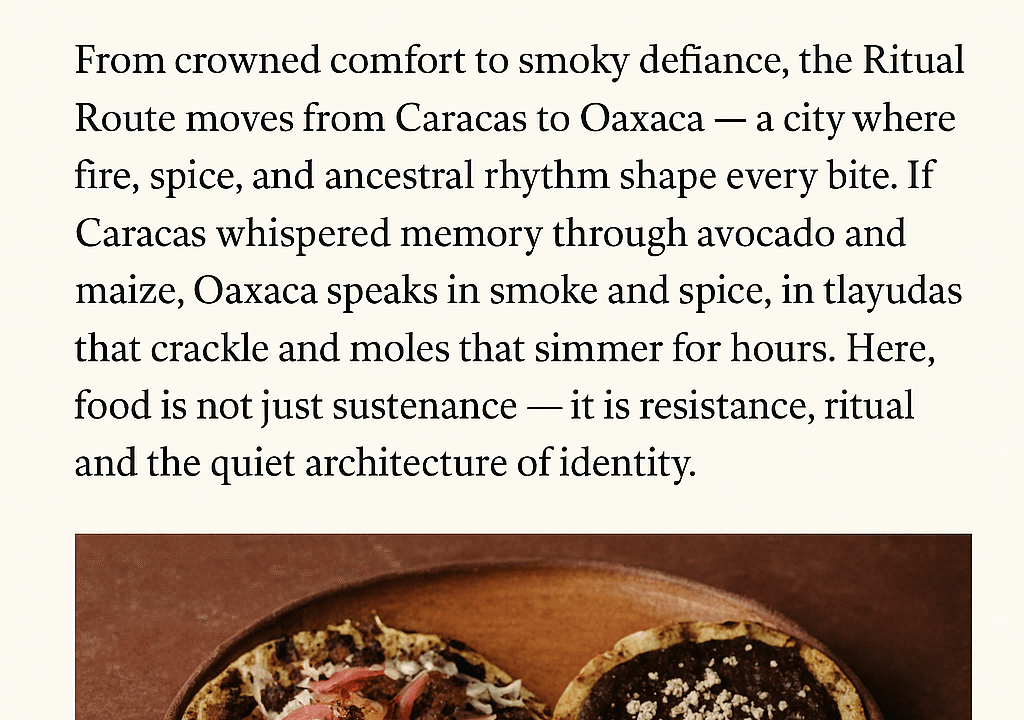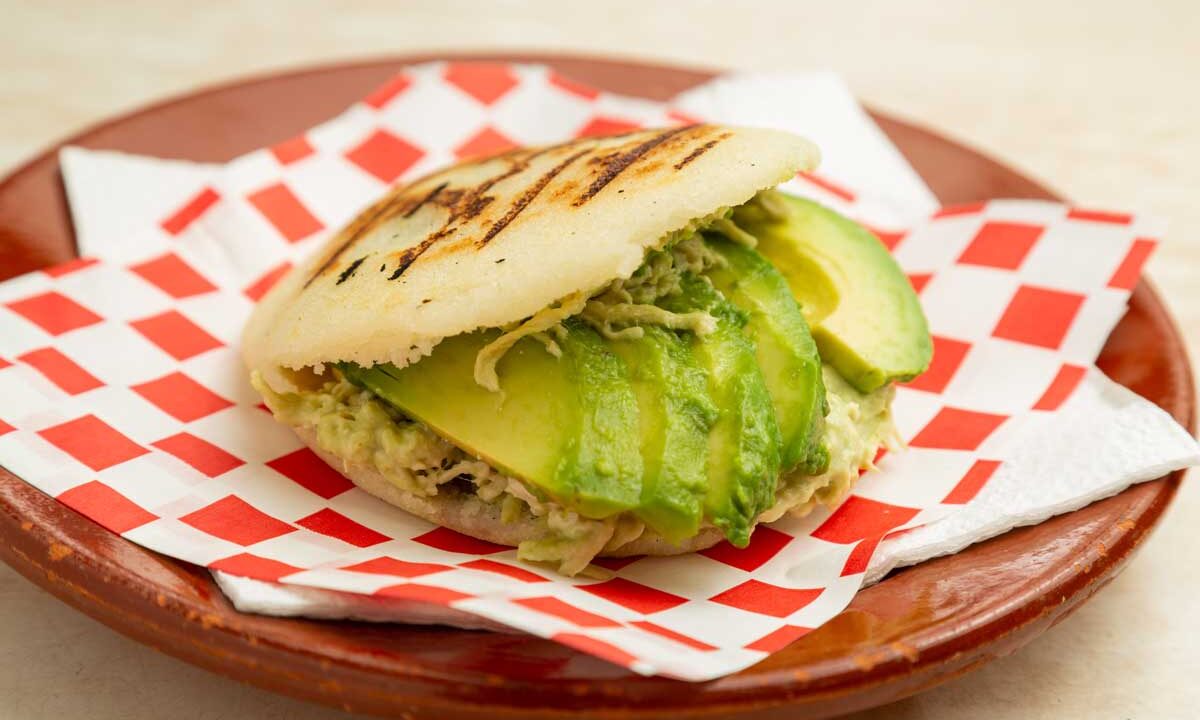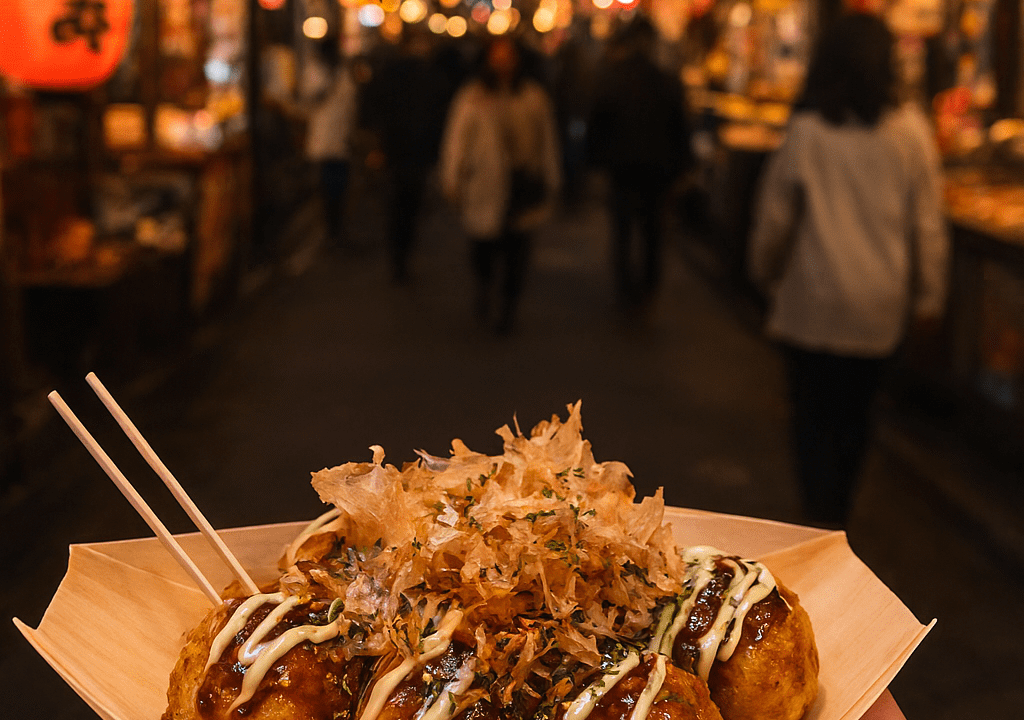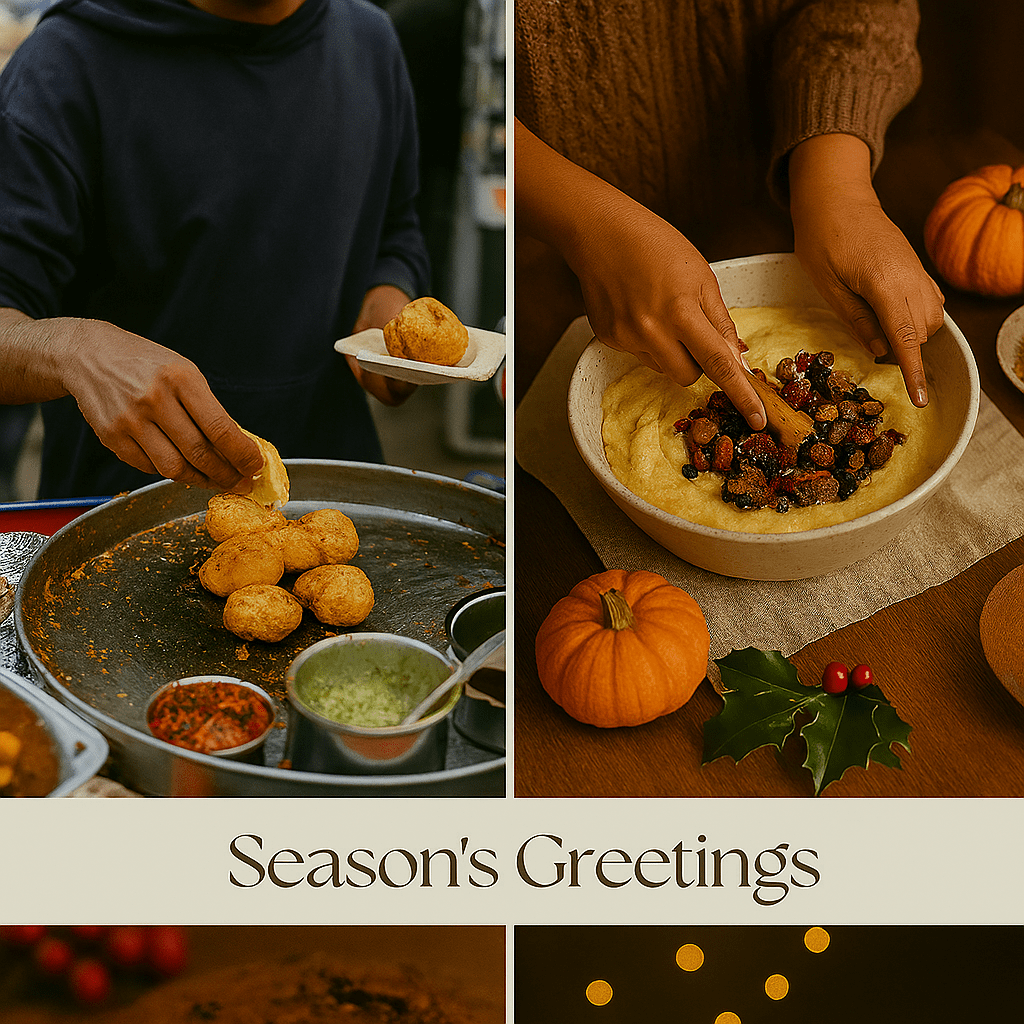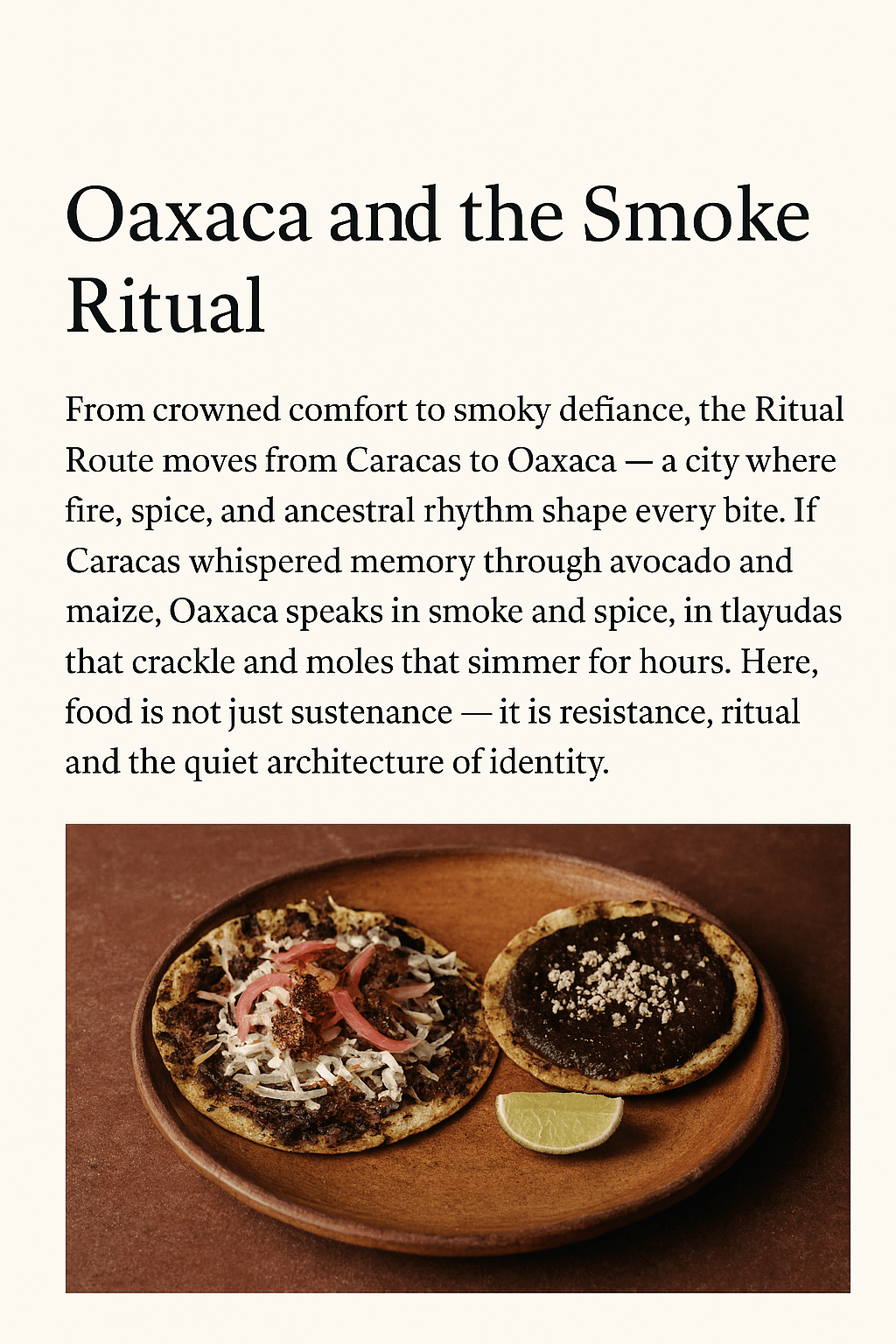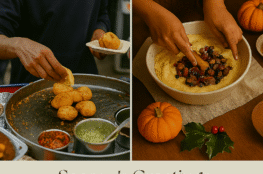Street Food Diaries — Season 2: The Ritual Route
Oaxaca and the Smoke Ritual
From crowned comfort to smoky defiance, the Ritual Route moves from Caracas to Oaxaca — a city where fire, spice, and ancestral rhythm shape every bite. If Caracas whispered memory through avocado and maize, Oaxaca speaks in smoke and spice, in tlayudas that crackle and moles that simmer for hours. Here, food is not just sustenance — it is resistance, ritual, and the quiet architecture of identity.
In Street Food Diaries — Season 2, Oaxaca becomes the second beat in a trilogy that began with the Reina Pepiada’s soft crown. This time, the ritual is bolder. Earthier. A celebration of roots that burn slow and deep.
Rituals of the Zapotec Kitchen
In Oaxaca, food is not prepared — it is performed. Rooted in Zapotec and Mixtec traditions, the city’s kitchens are spaces of ceremony, where smoke curls like prayer and spice is measured by memory, not spoons. Mole negro, the region’s most iconic sauce, simmers for days — a blend of chilies, chocolate, and ancestral rhythm. It is not made in haste. It is summoned.
Street vendors carry this legacy in every tlayuda they grill, every memela they press. The act of cooking becomes a ritual of resistance — preserving identity through flavor, fire, and time. In Oaxaca, to eat is to remember, and to cook is to honor. For a visual journey through Oaxaca’s vibrant street food scene, National Geographic’s photo story captures the textures, rituals, and rhythms of the city’s antojitos.
Flavor Grid — Smoke, Spice, and Street Rhythm
- Tlayuda: A giant, crispy tortilla layered with beans, asiento (pork fat), cabbage, and grilled meats
- Mole Negro: Deep, dark, and complex — a sauce that tastes like memory and midnight
- Chapulines: Toasted grasshoppers, crunchy and citrusy, eaten with lime and salt
- Tejate: A pre-Hispanic drink made from maize and cacao, served cold in clay cups
- Memelas: Thick tortillas topped with beans, cheese, and salsa — comfort in every bite
To understand how mole negro became Oaxaca’s most iconic sauce, this deep dive into the origins of mole negro explores its ritual roots and ancestral complexity.
Poetic interlude:
She danced with smoke. Her spice was a story. Her silence, a simmer.
Market Rhythms — Oaxaca’s Daily Pulse
Beyond the smoky kitchens and late‑night tlayuda grills, Oaxaca’s markets are living archives of flavor. At Mercado 20 de Noviembre, stalls overflow with chapulines, chilies, and cacao — each ingredient carrying centuries of ritual. Vendors call out in Zapotec and Spanish, their voices weaving commerce with culture.
Here, food is not just sold; it is narrated. A grandmother explains the difference between mole coloradito and mole negro, while a young vendor offers tejate, a frothy maize‑cacao drink once reserved for ceremonies. The market becomes a classroom, a stage, and a memory bank all at once.
For travelers, wandering these aisles is as essential as tasting the dishes. It’s where the trilogy’s emotional arc finds its heartbeat — Caracas whispered memory, Oaxaca chants resistance, and Manila will soon echo longing.
Further reading: National Geographic’s photo story on Oaxaca’s street food culture
Trilogy Cue — From Caracas to Manila
If Caracas was memory and Oaxaca is defiance, Manila waits with glitter and grief. The trilogy arc moves from softness to smoke to longing — each city offering a distinct emotional beat. In Tokyo, smoky teriyaki skewers pulsed through neon alleys. In Lisbon, bifanas and pastel de nata carried migration and heritage. Oaxaca adds heat, depth, and ancestral pride to the map.
Closing Note — The Ritual of Resistance
The Ritual Route is not just about food. It’s about how dishes become ceremonies — how flavor becomes memory, and memory becomes survival. In Oaxaca, every bite is a quiet protest, a celebration of roots that refuse to be erased.
“From crowned comfort to smoky defiance…”
→ read more: /street-food-diaries-caracas-reina-pepiada
- Lisbon
“In Lisbon, bifanas and pastel de nata carried migration and heritage…”
→ read more:/street-food-diaries-lisbon-bifana-pastel-de-nata - Tokyo
“In Tokyo, smoky teriyaki skewers pulsed through neon alleys…”
→ read more:/street-food-diaries-tokyo-alfama-akihabara

